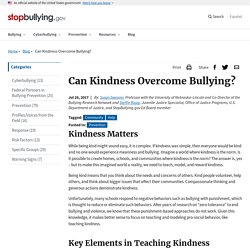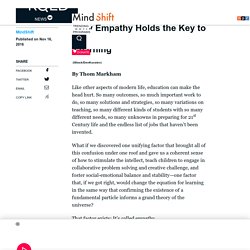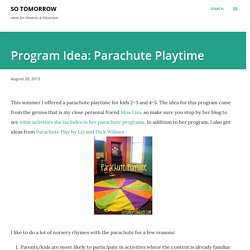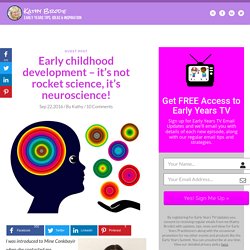

Teaching spoken english with the color vowel chart webinar presentation. The color vowel chart teachers guide. Famous People English Lessons: 167 Biographies and ESL Lesson Plans. Know how to respond to a student when he reports bullying incident. Moodle. Can Kindness Overcome Bullying? Kindness Matters While being kind might sound easy, it is complex.

If kindness was simple, then everyone would be kind and no one would experience meanness and bullying. Imagine a world where kindness is the norm. Is it possible to create homes, schools, and communities where kindness is the norm? The answer is, yes – but to make this imagined world a reality, we need to teach, model, and reward kindness. Being kind means that you think about the needs and concerns of others. Why Teaching Kindness in Schools Is Essential to Reduce Bullying. Phrases like "random acts of kindness" and "pay it forward" have become popular terms in modern society.

This could perhaps be best explained by those who have identified a deficiency in their lives that can only be fulfilled by altruism. It seems there are good reasons why we can't get enough of those addictive, feel-good emotions, as scientific studies prove there are many physical, emotional, and mental health benefits associated with kindness. As minds and bodies grow, it’s abundantly clear that children require a healthy dose of the warm-and-fuzzies to thrive as healthy, happy, well-rounded individuals. Patty O'Grady, PhD, an expert in neuroscience, emotional learning, and positive psychology, specializes in education. She reports: Kindness changes the brain by the experience of kindness. Total physical response - TPR.
Where is it from?

How can I use it in class? UL Building rapport. Seminars motivating. MOOC Module 3 Article 2. MOOC Module 3 Article 1. MOOC Module 2 Article 2. Involving students in classroom routines TEYL. The art of teaching language to young learners. Budget embedded picture mnemonics. Early years teachers around Australia are this week starting to set up their classrooms for the new school year.

Many are about to set up alphabet friezes and word walls. I’m hoping that my new, cheap-and-cheerful embedded picture mnemonics ($10 plus GST) will encourage and help them to instead set up sound friezes or sound walls. Early last year I commissioned talented, tolerant, patient Melbourne illustrator Cat MacInnes to turn my vague ideas into 46 cute, colour pictures you can print to help kids learn sound-letter relationships. They’re her copyright, so I have a limited number available (get in quick!). Linking sound to spelling – embedded picture mnemonics Children’s alphabet friezes typically associate each letter with a picture, ‘a’ with an apple, ‘b’ with a bus’ etc., generally going a bit pear-shaped when they get to X (xylophone?
Research shows that integrating letter shapes into relevant pictures is more effective than just associating letters with a relevant picture. Page from The Art of Teaching Foreign Languages to Young Learners - Universidad Nacional de Córdoba. Language and culture. Phonics Glossary. Principles of foreign language teaching to children. Page from The Art of Teaching Foreign Languages to Young Learners - Universidad Nacional de Córdoba. Page from The Art of Teaching Foreign Languages to Young Learners - Universidad Nacional de Córdoba. Improve Hand Eye Coordination: Finger...Nose...Dot. Activities for Eye Hand Coordination and Pencil Gripping. Developing Fine Motor Skills in Kids - Part 1. Characterising young learners. Kids Crafts - Crafty Morning. Music and Movement Activities for Toddlers and Preschoolers. 50+ Quick & Easy Kids Crafts that ANYONE Can Make!
Useful comments and conversations October November 2018. How to Talk so Kids Will Listen. Five essential tips for teaching very young children English. Are you daunted by the prospect of teaching English to very young children? Sheona Gilmour, lead educator on our new online course for teachers and parents, offers a few tips. Teaching English to very young children can be challenging, especially if you haven't done any training for the early years classroom. The first time I walked into a kindergarten, I didn’t want to go back the next day. I came from a background of teaching older children, who sat at desks and whose attention I could hold more easily. So the new environment, full of young children with much shorter attention spans, felt overwhelming. But if you take on board a few essentials, there's a good chance you'll end up cherishing the experience.
KQED Public Media for Northern CA. To make that argument requires a deep dive into the profound nature of empathy.

Right now, empathy roughly equates to “I like you and am willing to tolerate you regardless of differences because I am a good person.” But the textbook definition hints at something more profound: It’s ‘the feeling of being able to understand and share another person’s experiences and emotions.’ That all-encompassing definition means empathy results from a complex mix of other meaningful emotions and attitudes that fuel human personality, such as openness, curiosity, self-restraint, vulnerability, sensitivity, awareness, respect, appreciation, and even love.
Add this list to the fact that empathy can’t manifest unless we have had our own experiences and emotions to contrast, compare, and connect with others—and we can see that empathy is more than a simple connector; it’s the subterranean, fundamental glue that holds humanity together. Background to the Concept of Schema. NQS PLP E Newsletter No36.
EducatorsEn. Short stories. Program Idea: Parachute Playtime. This summer I offered a parachute playtime for kids 2-3 and 4-5.

The idea for this program came from the genius that is my close personal friend Miss Lisa, so make sure you stop by her blog to see what activities she includes in her parachute programs. In addition to her program, I also got ideas from Parachute Play by Liz and Dick Wilmes I like to do a lot of nursery rhymes with the parachute for a few reasons:Parents/kids are more likely to participate in activities where the content is already familiarI already know them so I don't have to learn a whole bunch of material at once (just being honest here)Easy for the families to replicate this activities at home with whatever props they might have. If they (or you!) Don't have a parachute, a bed sheet or blanket can be substituted easily. Parachute ActivitiesI picked different activities from this list for each group, depending on how the program was flowing.
Lift the chute up on Alabama, lower it on Mississippi. Easy Percussion for Kids: The Plate Dance for Toddlers & Preschoolers - Childhood101. PowerfulInteractions. Ey besd. The Brain-Changing Power of Conversation. The Science Researchers used highly faithful audio recorders — a system called Language Environment Analysis (known as LENA) — to capture every word spoken or heard by 36 4–6 year olds from various socioeconomic backgrounds over two full days. The recordings were analyzed to measure the number of words spoken by each child, the number of words spoken to each child, and the number of conversational turns — back-and-forth exchanges initiated by either adult or child.
Comparing those measurements with brain scans of the individual children, the analysis found that differences in the number of conversational turns accounted for differences in brain physiology, as well as for differences in language skills including vocabulary, grammar, and verbal reasoning. Read the MIT News story for a fuller summary of the research.
The Takeaways The “conversational turns” are key here, the researchers say. Learning through play ey. Taking Playtime Seriously. So part of encouraging play is pulling back on how much programmed goal-directed learning we expect from very young children, to leave them time for the fun of exploration, curiosity and, well, fun. But another important part may be creating environments that foster children’s play and parents’ participation and attention. Dr. Hirsh-Pasek, who is a senior fellow at the Brookings Institution, cited its Learning Landscapes Initiative, which aims to set up learning opportunities in public places where people will encounter them. One of these, the Urban Thinkscape project in Philadelphia, involves puzzle benches at bus stops, with puzzles designed to build STEM skills.
Importance of play for babies & children. Australian Government Department of Education and Training (2009). Belonging, being and becoming: The early years learning framework for Australia. Canberra: Commonwealth of Australia. Retrieved 19 June 2019 from Cole-Hamilton, I. (2011). Getting it right for play: The power of play: An evidence base. How young children learn English through play. Children need time to play.
The importance of Play by James Nottingham. 12 features of free flow pay by Tina Bruce. Different types play. How young children learn English as another language. Tips on Learning to Talk. Learning to talk is a process that starts at birth, when your baby experiences how voices can sound.

By 2 years old, most babies have a large vocabulary and can put words together to express their needs and ideas. A few more myths about speakers of multiple languages. Does multilingualism cause language delays and identity problems? The British Council's Nayr Ibrahim busts a few more myths about speakers of multiple languages. Myth: Multilingualism causes language delay Raising children bilingually is sometimes believed to cause language delay. Recommendations and advice. Recommendations and advice. Earlychildhood NEWS - Article Reading Center. When we first brought our daughter home from the hospital I was inexperienced.

Mother came to help and in her always wise and gentle way said, "Honey, you need to talk to that baby. " What wonderful advice! Mother's counsel paid great dividends and I remembered it when our granddaughter was born. As the nurse measured and cleaned and dressed that brand new soul, I talked to her...and she paid attention. She was interested in this talking thing. How can young children best learn languages? The British Council's Tracey Chapelton explains how parents of young children can lay the foundations for success. Development Matters FINAL PRINT AMENDED. The Power of Evening Routines. The word “structure” can evoke less than positive associations. It suggests constraints, which are never a good thing, right? Wrong. The Woman Who Changed Her Brain: Barbara Arrowsmith-Young at TEDxToronto.
Early childhood development – it’s not rocket science, it’s neuroscience! - Kathy Brodie Early Years Training. I was introduced to Mine Conkbayir when she contacted me about neuroscience informing early years practice, which I think is such an exciting, and growing, area of study.

FAQ: Raising Bilingual Children. Listen to Your Mother. Young children face a remarkable challenge in learning to use the language of their culture. Toddlers vary widely, however, in the rate at which they learn new words.1 A team of Harvard Graduate School of Education researchers set out to ask whether and how children's language environment can impact vocabulary development. Let's Talk.
How can I help my child to start talking? (Video) Multilingual Preschoolers.